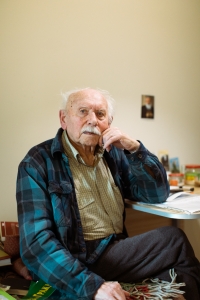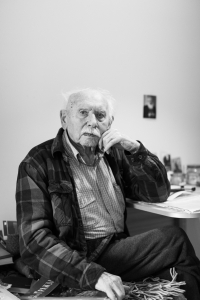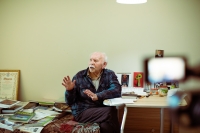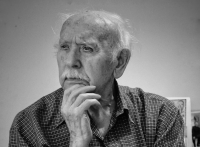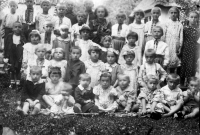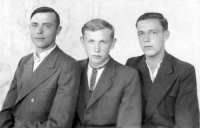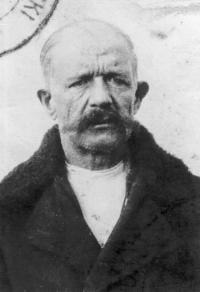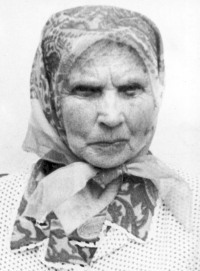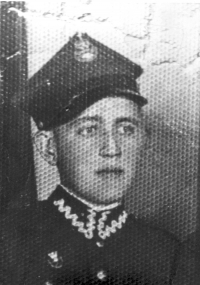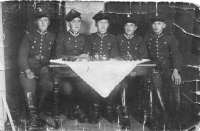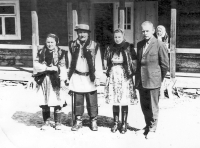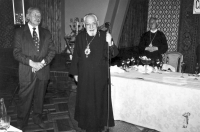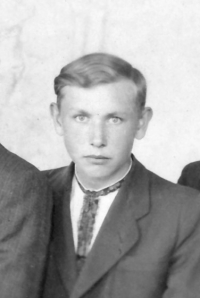"Somehow, by intuition, I... You know, if you have goodwill, and don't want just to make money, then Mr. God will guide you. And one day you hear something like this: “Yeah, wait, I'm going to Holovy now, and, well, maybe I'll go to Horodenshchyna because they said there were others like that.” And then I went, I found there also those who were somewhere in Siberia with (my) mother, and began to speak. “Yes, yes, there are some here, but no one is looking at them, they are in old houses, no one lives there anymore, but let's go.” We went there and we saw the icons, a few of them, so beautiful, but under a pile of dust, cobwebs, you know, covered in all that. But I started... Because I wanted to buy: “no, how can I sell it, it was once bought by a grandfather or great-grandfather. It is sacred, you can't take money for it. Bring me here instead of those new icons that unspeaking people now sell.” In Lviv, on the Krakivskyi market, in that church...The Transfiguration Church, near the Transfiguration Church, there are unspeaking people, those who do not speak. They used to make... From old icons, not on glass, but old icons. They took pictures, painted them a little with some red and black mascara, and sold them. Well, I went to them, took about three pictures, and drove back there. They took those old icons from the wall, put new icons (that I've brought) and that's all. [...] God forbid, how could it... It was necessary to have an agent, he went there, an old man like that, who was with my (relatives) in Siberia, a respectable man, he went to people and asked, and then later I went with him. So I would come and go there to somehow snatch those icons from them, or buy them, or anyhow. Well, there was a policeman in every village, you know: “Who are you, what kind of a man from Lviv are you, and why so unknown?”. The police were waiting at every turn. “Everything's fine, it's fine, he's my acquaintance, he's my friend's son, he is our man.” And then, and then I had, so to speak, identification, the police wouldn't stop me for it. And there I would take about three icons in a bag, I'd drive to Kolomyia, to Kolomyia by train and to Lviv - early in the morning I was already here. I brought them to my house - I took them out to the balcony, and I was afraid, you know, to open the doors. I was thinking there might be some cockroaches or something creepy like them, and it would crawl into my house. So usually I came from work, took the icons one by one, slowly, wipe them, check for cockroaches and bugs, or fleas, or something like that. And so, as a result, I had to learn to restore icons when they were damaged. And then there was no one to ask, there was no restoration (company), so I had to find some old Polish textbooks somewhere, and I was trying to learn by myself. I asked old people how they used to paint, those who, what, what they used for paints - whether they used oil or something else. And the pokost was like oil, only for painting the walls."

